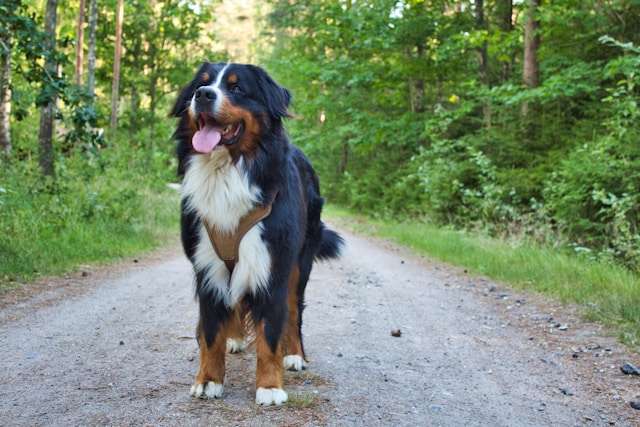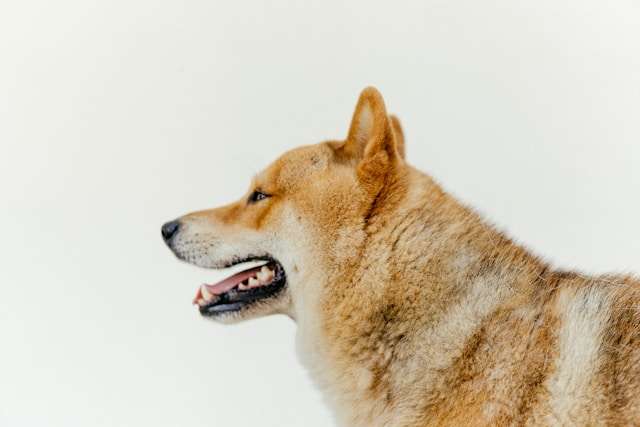Why Do Dogs Have Whiskers? Unveiling the Secret Superpowers
Why Do Dogs Have Whiskers? Unveiling the Secret Superpowers of Your Pup’s Facial Fuzz
Have you ever wondered why your furry friend has those cute whiskers? We sure have! Those distinctive hairs on your dog’s face aren’t just for show. Dog whiskers are special sensory tools that help them navigate the world and stay safe. Let’s dive into the fascinating world of canine whiskers and discover why they’re so important.
You might be surprised to learn that dog whiskers are more than just hair. They’re sensitive devices that send crucial information to your pup’s brain. These specialized hairs help dogs sense their surroundings, avoid obstacles, and communicate emotions. It’s like they have their built-in radar system!
Did you know that dogs have four different types of whiskers? Each type has its unique function, from helping your pooch locate small objects to protecting their eyes from harm. We’ll explore all this and more, so stick around to uncover the secrets behind your dog’s marvelous whiskers.
Table of Contents
Key Takeaways
- Dog whiskers are sensory organs that help dogs navigate their environment
- Whiskers aid in communication and protect dogs from potential dangers
- Proper care of whiskers is crucial for a dog’s well-being and sensory perception
What Are Dog Whiskers
Dog whiskers are excellent sensory tools that help our furry friends navigate the world. These special hairs are crucial in how dogs perceive their environment and interact with objects around them.
Whiskers Defined
Have you ever wondered what those long, stiff hairs on your dog’s face are? They’re called whiskers, but the fancy scientific term is vibrissae. These aren’t your average dog hairs! Whiskers are much thicker and coarser than regular fur.
You’ll find them in several spots on your pup’s face:
- Around the muzzle (mystacial whiskers)
- Above the eyes (supraorbital whiskers)
- On the cheeks (genal whiskers)
- Under the chin
Whiskers are like nature’s GPS for dogs. They help our canine pals sense their surroundings and avoid bumping into things. Pretty neat, right?
Anatomy of Whiskers
Let’s dive into the nitty-gritty of whisker anatomy. These special hairs are more than just long strands poking out of your dog’s face. They’re sophisticated sensory tools!
Whiskers are deeply rooted in the skin, much more profound than regular hair. The follicles where they grow are packed with nerves, making them super sensitive. When a whisker moves, even slightly, it sends signals straight to your dog’s brain.
What are whiskers made of? Just like other hairs, they’re composed of keratin. But here’s the cool part – the base of each whisker is connected to a particular structure called a proprioceptor. This little powerhouse helps your dog know where their body is in space.
The Function of Dog Whiskers
Dog whiskers are excellent sensory tools that help our furry friends navigate the world. They’re not just for looks – these special hairs play a significant role in how dogs interact with their environment.
Sensory Perception
Did you know that a dog’s whiskers are like super-sensitive fingertips? They’re packed with touch-sensitive neurons that send essential info to the brain. When a whisker moves, even slightly, it triggers these neurons. This helps dogs “feel” their surroundings without actually touching them.
Have you ever seen your pup’s whiskers twitch? That’s them in action! They’re picking up on tiny changes in air currents. This helps dogs sense nearby objects or movements. It’s like having a built-in radar system.
Whiskers also help with vision. Dogs don’t see as well up close, so their whiskers fill the gaps. They can judge distances and avoid bumping into things. Pretty neat, right?
Spatial Awareness
We’ve all seen dogs squeeze through tight spaces. How do they do it? You guessed it – whiskers! These special hairs help dogs determine if they can fit through an opening.
When whiskers touch something, they send a signal to the brain. This tells the dog, “Hey, this space might be too small!” It’s like having a personal space calculator.
Whiskers also help in the dark. They can sense walls and objects before the dog bumps into them. This is super helpful for nighttime navigation or in dimly lit areas.
Environmental Interaction
Whiskers aren’t just for navigation—they’re protection, too! They’re like a dog’s personal bodyguards. When something touches the whiskers, it triggers a reflexive blink, which helps protect the dog’s eyes from potential harm.
Think about your dog on a walk. Their whiskers help them avoid low-hanging branches or bushes. It’s like having an early warning system for their face!
Whiskers even help with emotions. They can detect subtle changes in air currents caused by another animal’s movements, which helps dogs read body language and detect potential threats.
Whiskers and Dog Behavior
Dog whiskers are crucial in how our furry friends interact with the world around them. These special hairs help dogs communicate and navigate their surroundings with ease.
Communication Through Whiskers
Did you know your dog’s whiskers can tell you a lot about their feelings? It’s true! When a dog is relaxed, their whiskers tend to lay flat on their face. But if they’re feeling upset or on high alert, those whiskers might flare out.
Think of whiskers as mood indicators. They’re like little flags that signal your pup’s emotional state. Pretty neat, right?
Here are some whisker positions and what they might mean:
- Relaxed and flat: Happy, content dog
- Slightly forward: Curious
- Pulled back: Nervous or afraid
- Flared out: Excited or agitated
Effects on Balance and Navigation
We’ve all seen our dogs move gracefully through tight spaces. Ever wonder how they do it? Their whiskers are the secret! These special hairs help dogs determine whether they can fit through narrow openings.
Whiskers also act like radar detectors. They pick up on changes in air currents, helping dogs “see” objects before touching them. This is super helpful when moving at high speeds or in the dark.
Here’s a fun fact: dogs’ whiskers are so sensitive that they can detect even the slightest environmental changes. This helps them:
- Avoid bumping into things
- Judge distances accurately
- Navigate through unfamiliar spaces
So, thank their whiskers the next time you see your pup expertly maneuver through a cluttered room!
Caring for Your Dog’s Whiskers
Let’s discuss how to keep your pup’s whiskers in tip-top shape. We’ll discuss whether trimming is a good idea and how to keep those sensitive hairs healthy.
Should You Trim Whiskers?
We don’t recommend trimming your dog’s whiskers. These special hairs help your furry friend navigate its environment, and cutting them can make your dog feel confused or disoriented.
Some groomers might offer to trim whiskers, but it’s best to say no. If you accidentally cut a whisker, don’t worry! It’ll grow back. Just like our hair, dog whiskers shed naturally and regrow over time.
Remember, whiskers aren’t just for looks. They’re essential sensory tools. Removing them is like taking away one of your dog’s superpowers!
Whisker Health
Keeping your dog’s whiskers healthy is easy. Here are some tips:
- Be gentle when petting your dog’s face
- Avoid pulling or plucking whiskers
- Use dog-safe shampoos when bathing
If you notice any redness or swelling around your dog’s whiskers, it’s time for a vet visit. This could be a sign of an infection or skin problem.
Healthy whiskers should be straight and firm. Curled or brittle whiskers might indicate a health issue. When in doubt, ask your vet!
Interesting Whisker Facts
Did you know that dog whiskers are more than just cute facial hair? These excellent sensory tools have some fascinating features and variations. Let’s explore some cool facts about our furry friends’ whiskers!
Comparing Dog Whiskers to Other Animals
Dog whiskers are pretty impressive, but how do they compare to other animals? Well, cats have whiskers, too, and they’re similar to dogs’. Both use them to sense their environment and navigate tight spaces.
But here’s a fun fact: a cat’s whiskers are usually about as wide as its body! This helps kitties squeeze through narrow openings. On the other hand, dogs have whiskers that vary in length and thickness.
What about other mammals? Many have whiskers, including rats, seals, and even some primates. But dogs and cats rely more heavily on them for sensory input.
Genetic and Breed Variations
Have you ever noticed how different dog breeds have different whisker styles? It’s true! The length, thickness, and number of whiskers can vary based on a dog’s genetics and breed.
Some breeds, like Schnauzers, are known for their prominent whiskers. Others, like Poodles, might have less noticeable ones. But don’t worry – all dogs have whiskers, even if they’re hard to see!
Age can also affect whisker appearance. Puppies start developing whiskers when they’re just a few weeks old, and as dogs age, their whiskers might change color or become thicker.
Did you know that some dogs can even have curly whiskers? It’s not common, but it happens! And while most dogs have dark whiskers, some can have white or multi-colored ones. Isn’t that cool?
Frequently Asked Questions
Dog whiskers play a crucial role in our furry friends’ lives. Let’s explore some common questions about these fantastic sensory tools that help our canine companions navigate the world around them.
What is the importance of whiskers to dogs?
Whiskers are vital for dogs to learn about their surroundings. They act like radar, helping pups sense objects and movement nearby. This is especially useful since dogs don’t have the best eyesight.
Think of whiskers as a dog’s built-in GPS!
Can removing a dog’s whiskers affect its senses?
Absolutely! Trimming or removing a dog’s whiskers can seriously affect its senses—it’s like taking away one of its superpowers.
We should never cut our pup’s whiskers. They need them to feel safe and confident in their environment.
What role do whiskers play in a dog’s spatial awareness?
Whiskers are like a dog’s personal space bubble. They help our furry friends determine whether they can squeeze through tight spots.
Imagine walking through a dark room without your hands in front of you. That’s what it’s like for a dog without whiskers!
How do a dog’s whiskers differ from those of a cat?
While both cats and dogs have whiskers, there are some differences. Dog whiskers are typically thicker and less mobile than cat whiskers.
Cats use their whiskers for hunting and precise movements. Dogs rely on theirs more for general awareness and protection.
What are the consequences of pulling out a dog’s whiskers?
Pulling out a dog’s whiskers is a big no-no, as it can be painful and confusing for our four-legged friends.
Whiskers are deeply connected to a dog’s nervous system. Yanking them out can cause discomfort and harm their ability to sense their surroundings.
How do whiskers aid in protecting a dog’s face?
Whiskers are like little faceguards for our pups. They help prevent injuries by alerting dogs to nearby objects.
When something touches a dog’s whiskers, it triggers a protective reflex. This quick reaction can prevent the dog from bumping into things or getting poked in the eye.








One Comment